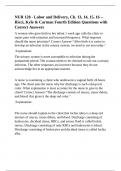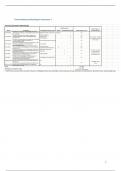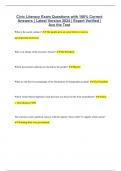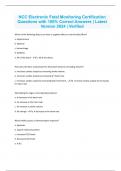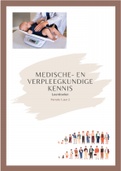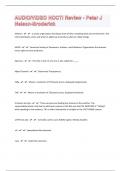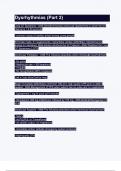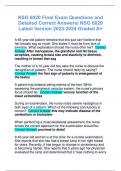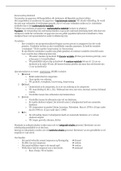Exam (elaborations)
NUR 128 - Labor and Delivery, Ch. 13, 14, 15, 16 -- Ricci, Kyle & Carman Fourth Edition Questions with Correct Answers
- Module
- Institution
NUR 128 - Labor and Delivery, Ch. 13, 14, 15, 16 -- Ricci, Kyle & Carman Fourth Edition Questions with Correct Answers
[Show more]
